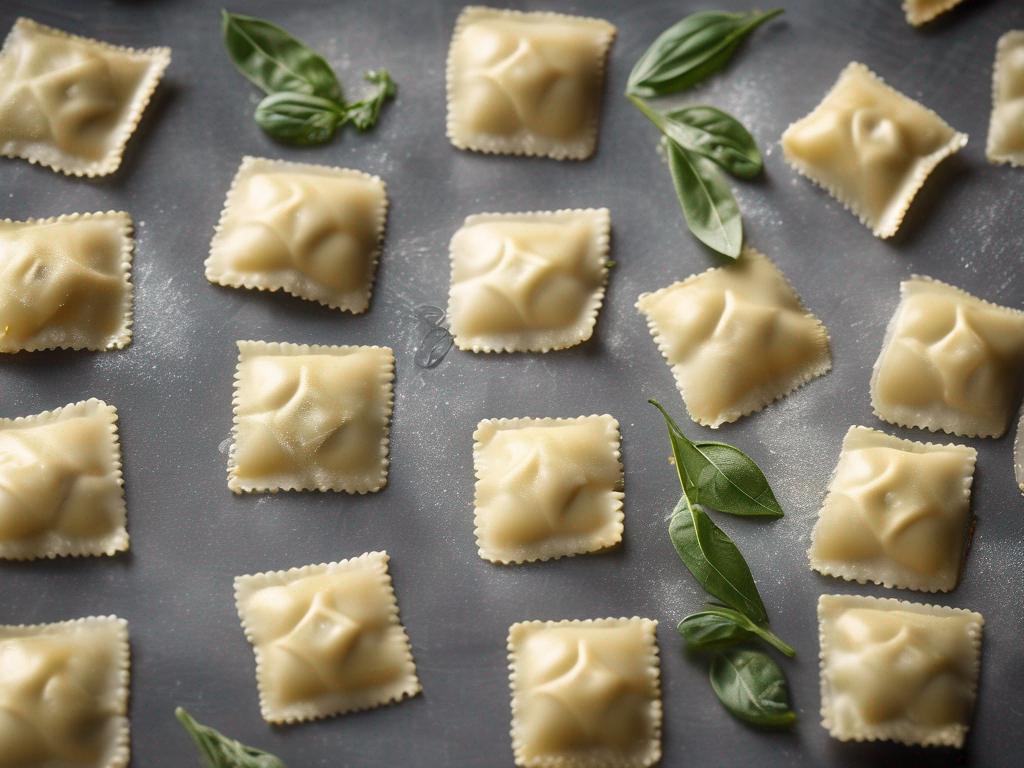
How to Tell if Fresh Ravioli Opened Has Gone Bad
Get Your Free Food Safety Cheat Sheet
30 most common foods with instant answers. Print it and stick it on your fridge—completely free!
How to Tell if Fresh Ravioli Opened Has Gone Bad
Fresh ravioli is a delicious and convenient meal option, but like any perishable food, it can spoil if not stored or handled properly. Whether you have leftover fresh ravioli or you're wondering if a package of opened ravioli is still safe to eat, it's essential to know how to identify signs of spoilage. In this blog post, we will discuss how to tell if fresh ravioli that has been opened has gone bad, and provide you with practical tips to ensure food safety. (Fresh ravioli opened)
Factors that Affect the Shelf Life of Fresh Ravioli
Fresh ravioli is typically made with perishable ingredients such as cheese, meat, and vegetables, which can spoil if not stored correctly. Several factors can affect the shelf life of fresh ravioli, including:
1. Temperature
Temperature plays a crucial role in the spoilage of fresh ravioli. Storing ravioli at room temperature for an extended period can promote the growth of harmful bacteria.
2. Packaging
The packaging of fresh ravioli is designed to maintain freshness and prevent contamination. Once the package is opened, the ravioli is exposed to air and bacteria, which can accelerate spoilage.
3. Hygiene
Proper hygiene practices, such as washing hands before handling ravioli and using clean utensils, can help prevent contamination and extend the shelf life of the product.
4. Storage Conditions
Storing fresh ravioli in the refrigerator at the correct temperature can help prolong its shelf life. Improper storage can lead to the growth of bacteria and mold.
Signs that Fresh Ravioli Has Gone Bad
It's essential to be able to recognize the signs that fresh ravioli has gone bad to avoid foodborne illnesses. Here are some common indicators that your fresh ravioli may have spoiled:
1. Off Odor
If your fresh ravioli has a sour, musty, or off-putting smell, it is likely spoiled and should be discarded.
2. Mold Growth
Visible mold growth on the surface of the ravioli indicates spoilage and contamination. Do not consume ravioli with mold on it.
3. Slimy Texture
Fresh ravioli should have a firm texture. If it feels slimy or overly soft to the touch, it is a sign of spoilage.
4. Changes in Color
If the color of the fresh ravioli has changed significantly or appears discolored, it may be an indication that it has gone bad.
5. Bubbling or Foul Smell
If the ravioli is bubbling or has a foul odor when cooked, it is best to err on the side of caution and avoid consuming it.
Tips for Properly Storing Fresh Ravioli
To ensure the freshness and safety of your fresh ravioli, follow these tips for proper storage:
-
Refrigerate promptly: After opening the package, refrigerate any leftover fresh ravioli within two hours to prevent spoilage.
-
Use airtight containers: Transfer leftover ravioli to airtight containers or resealable bags to maintain freshness and prevent contamination.
-
Label and date: Label the containers with the date you opened the ravioli to track its freshness.
-
Follow package instructions: Always follow the manufacturer's storage guidelines for fresh ravioli to maximize its shelf life.
-
Avoid cross-contamination: Store fresh ravioli away from raw meats, poultry, and seafood to prevent cross-contamination.
Conclusion
Fresh ravioli is a versatile and tasty dish that can be enjoyed in various ways. By understanding the factors that affect its shelf life, recognizing signs of spoilage, and following proper storage practices, you can ensure that your fresh ravioli remains safe to eat. When in doubt, remember the golden rule: when in doubt, throw it out. Your health and safety are worth it!
Remember, [fresh ravioli opened](/food/fresh ravioli opened) that has gone bad can pose serious health risks, so it's essential to be vigilant and mindful of food safety practices. By following the tips outlined in this blog post, you can enjoy your fresh ravioli safely and deliciously. (Fresh ravioli opened)
Authoritative Food Safety References
These agencies and university labs inform every tip and health precaution we publish.
USDA FoodKeeper – Cold Storage Guidelines
Official refrigerator, freezer, and pantry timelines maintained by the U.S. Department of Agriculture.
Visit USDA FoodKeeperFDA Produce Safety Rule & Grower Guidance
Field-to-fridge handling practices that prevent contamination of fruits, vegetables, and leafy greens.
Visit FDA Produce SafetyCDC Foodborne Illness Prevention Hub
Surveillance-backed guidance on pathogens, symptoms, and steps to reduce foodborne illness risk.
Visit CDC Food SafetyUC Davis Postharvest Technology Center
University research detailing optimal storage atmospheres for produce after harvest.
Visit UC Davis PostharvestPenn State Extension – Home Food Preservation & Safety
Peer-reviewed extension bulletins on safe canning, chilling, and reheating practices.
Visit Penn State ExtensionGet Your Free Food Safety Cheat Sheet
30 most common foods with instant answers. Print it and stick it on your fridge—completely free! Want more? Upgrade to the complete guide with 70+ foods.
Scan your food directly and get instant safety info using our AI-powered camera feature.